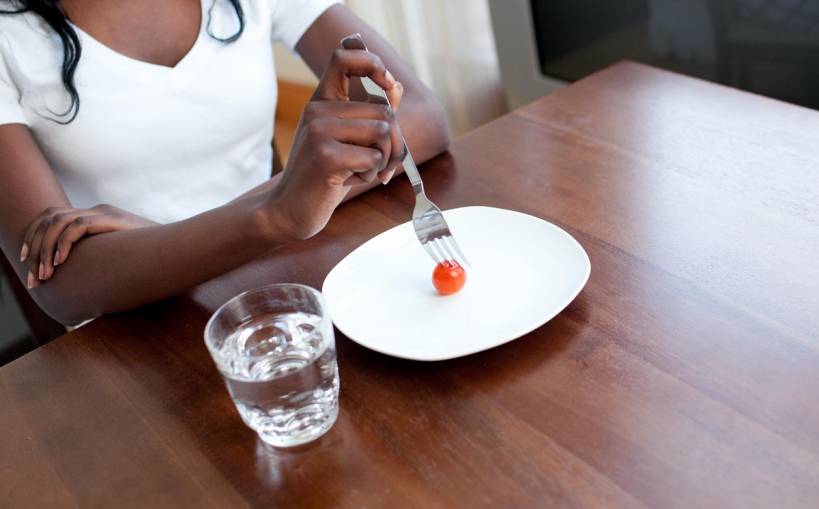Have you ever ordered multiple items from a fast-food restaurant (or multiple restaurants, even) pretending to order for several people but knowing that you were going to eat all of the food by yourself?
Do you eat food and hide the ‘evidence’ in the trash so no one will see what you ate?
If so, you may want to read Kristin’s story.
What Is Emotional Eating?
Emotional eating is what most of us do in response to an emotional trigger – whether happy, sad, celebrating, frustrated, angry, depressed, or scared – and this is how many us come to have eating disorders and the weight gain that typically goes along with such disorders.
Sound familiar? If not, you may be in the majority of people who don’t recognize the emotional aspects that go into eating habits. It’s quite common to not be aware of the factors that impact emotional eating. In fact, most of the decisions we make each and every day, including eating, involve an emotional component well before we have the chance to make a rational decision.
We are subconsciously conditioned through years of exposure to family, friends and advertising, that food just makes us feel good. Food fills a real biological need in us so that the body has energy to burn. But, as we move into emotional eating, the food is being used to fill another void – one which should be filled elsewhere and in other ways.
There is a fine line when it comes to emotional eating and a full-blown eating disorder. People who have either a binge eating disorder or a problem with compulsive eating go beyond the basic behaviors of emotional eaters, and there are ways to tell which category you fall into. There are specific characteristics that are evident in people who have full-blown eating disorders. They regularly binge – eat large amounts of food very rapidly – and they will typically ‘feel’ out of control about food, often feeling they are actually obsessed with food.
Other behaviors that distinguish emotional eating from a person with an eating disorder is that people with eating disorders regularly hide foods around the house, or they may eat in hiding. For instance, the primary shopper may purchase foods that they hide from the rest of the family, and then eat after everyone else goes to bed or leaves the house.
Eating Disorder Treatment
Many times people who are emotional eaters and who also have other eating disorders as well have experienced one or more traumatic events in their lives – physical or sexual abuse for example. The number of people with eating disorders who have experienced this abuse is much higher than those with simple emotional eating.
People suffering from binge eating have several challenges, not the least of which is the fact that the condition isn’t as well known as anorexia or bulimia. Anyone with eating disorders may not know if they stem from a medical disorder and therefore should never attempt traditional weight loss solutions or try to stop binge eating on their own. Instead, they should seek the advice of a trained licensed therapist.
While people who have significant emotional or binge eating habits aren’t at the medical and psychological risk that people with full-blown eating disorders are, they may nonetheless suffer just as much because their condition is not as well known and so is not as noticeable. If you feel like your condition is severe enough, there are eating disorder clinics that are designed specifically with these disorders in mind, where eating disorder therapy and help losing weight, if necessary, is readily available to you.
Breaking Free From Emotional Eating
Control of emotional eating starts with self-awareness of the problem and then self-management. Self-awareness is the most difficult part since you have to accept the fact that you have a weakness that has led to the problem with obesity or being overweight, and that you weren’t just ‘born’ that way.
You can begin to evaluate your emotional eating habits by keeping a short 4-5 day diary. Write down each time you eat. Concentrate on the time of day you eat, and how you are feeling each time you reach for another morsel of food, rather than what you actually eat. If you acknowledge that there WILL be a feeling associated with your actions, you will find that identifying that emotion becomes easier each day.
Look through your diary at the end of the 5th day, and note how many times you ate because you were, or thought your were, hungry. Evaluate that number, the times of the day and other emotions that seemed to be involved in the automatic reach for food.
Be honest… you won’t help or hurt anyone but yourself. Self-management will be the next step. Like all things in life, the longer you do something the easier it gets. Practice really does make something, if not perfect, at least a little easier.
Even though you can do this part on your own, you’ll probably be much more successful if you enlist the help of a partner, or at least a calendar.
Continue to write down the times you eat, and the emotions involved at the time. As you are committed to write before you eat, and read your reasons why in each instance, you will find it easier to put that food down when it is emotionally triggered.
Eventually, the emotional eating will decrease and you’ll be surprised to feel the feelings of actual hunger again! As debilitating as eating disorders can be, they can also be recognized as such and the healing process can begin. You don’t have to continue to suffer with this problem. There is help available and there are things you can do yourself to help.
If you’ve managed to reach your target weight and achieved those weight loss goals you had, you’ll need to plan how you’re going to keep the extra pounds off. The last thing you want is to for them to return! Maintaining your fitness training is one way. Working on some muscle building is another. Or you can do both. Like John Cena clearly has – see how he did it! Share what we know about the (as we like to call it) John Cena Workout.





